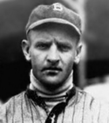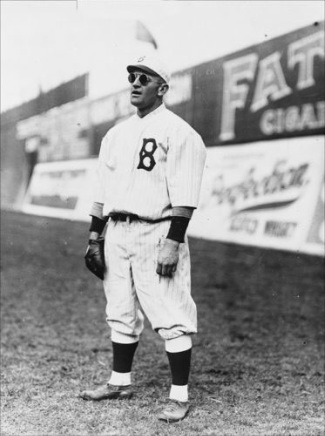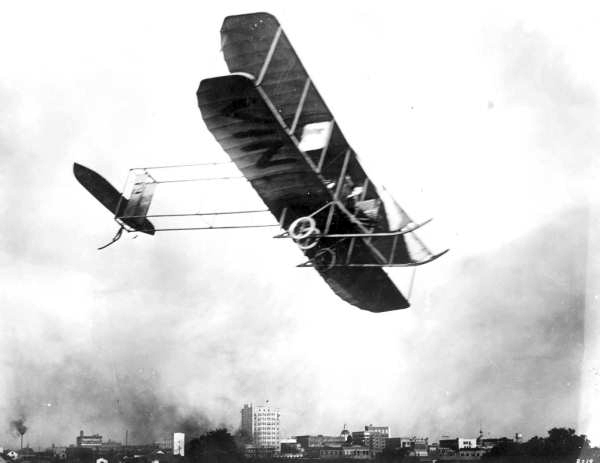|
Casey Stengel showed up for spring training in Daytona in 1915, 20 pounds under his playing weight after a hospital stay for typhoid fever that nearly killed him. He was still so weak that he couldn’t participate in the workouts at City Island Ball Park and didn’t even suit up for nearly a month.
On the bridge, Stengel muttered, Finally, one night at midnight, Casey Stengel slumped over the edge of Daytona’s South Bridge, a wooden trestle bridge that spanned the Halifax River just to the south side of tiny City Island, which was barely larger than the baseball park back then in 1915. Stengel was only 25, but that seemed already too many years because he was facing career failure, debilitating illness, and likely public shame that he wouldn’t be able to stomach.
Just then about 50 yards onto the bridge beyond City Island, the dim headlights of New York Press sportswriter George Underwood’s “19-teens” motorcar flashed across the lone figure standing in the dark, ready to plunge into the river. Underwood was returning from crossing the river from Daytona Beach (on the beachside) to Daytona (on the mainland) where he had wired his baseball story by Western Union late at night to New York City. Underwood stopped and recognized Casey Stengel, the young Dodger outfielder who was in Daytona for spring training. Stengel’s team couldn’t all be housed at the team’s hotel, so he was one of the players assigned to unsupervised private boardinghouses, leaving him free to “sport” without his manager or teammates to keep him in line. Stengel was a bachelor and a party boy who loved to go out nights. He was 25, and there was nothing to keep him from cheap drink and cheap women. Sports historian Fred Lieb, author of Baseball as I Have Known It, recounts that Underwood asked Stengel what he was doing out on the bridge at midnight. “If Uncle Robbie [the Brooklyn manager] hears of it, he’ll slap a good fine on you,” Underwood said. Stengel muttered, “I was trying to get up the guts to jump off into the deep water.” Underwood asked, “Whatever gave you such a crazy idea?” “Well, I’m not hitting. . . Besides, Uncle Robbie doesn’t like me. And I’ve got the clap.” If Underwood hadn’t driven onto the South Bridge by City Island that midnight, Casey Stengel might have been buried in Pinewood Cemetery on the beachside. Baseball fans may remember Fred Lieb as a character in the classic Lou Gehrig baseball movie, The Pride of the Yankees (Lieb was portrayed by Walter Brennan). He was also the sportswriter who coined the unforgettable name for Yankee Stadium–”The House That Ruth Built.” Lieb’s account of Stengel’s near suicide in Daytona in 1915 was not published until six decades later in 1977, after Stengel had died and when Lieb was nearly 90 years old. Stengel’s Unmentionable Illness in Daytona Stengel’s death-struggle with typhoid was rather common in the U.S. back then. In fact, at the time Stengel was languishing at City Island Ball Park, out in Texas several New York Giants ballplayers were hit with typhoid, and their manager ordered the whole team vaccinated. Even so, Stengel’s problem was more than typhoid – he’d become infected with gonorrhea, likely from somewhere in Daytona. He apparently hadn’t come to town with it because although symptoms usually show up within a week or so, Stengel didn’t have any signs of it until about the time he suited up, nearly a month after coming to spring training at City Island. Many years later, Garry Schumacher, a sportswriter who followed the Yankees, suggested that the reason that Stengel became known later in his career for keeping his distance from the women groupies who were so eager to be with pro baseball players was likely because “he had a little of that Cupid’s Catarrh when he was a young fellow, and it made him a little shy ever since.” Before Stengel’s interrupted midnight appointment with death on Daytona’s South Bridge, he was likely the instigator of one of baseball’s most legendary pranks. Stengel’s Legendary Baseball Prank at City Island Ball Park Stengel had been drafted by the Dodgers in 1912, and because he always talked about his hometown, Kansas City, Missouri, his teammates began calling him “KC,” which became “Casey” (probably because of the poem "Casey at the Bat"). When Stengel came to Daytona in 1915 for spring training with the Brooklyn Dodgers, he had a new manager, Wilbert Robinson, who was almost 53 but still saw himself as a catcher of heroic ability; and when the new manager was reminded that in 1908 the Washington Senators catcher Charles “Gabby” Street had caught a baseball released from a window near the top of the Washington Monument, Robinson boasted that he could do even better – he could catch a baseball dropped from an airplane from the same height –525 feet. So Stengel and other members of the team bet that their manager couldn’t do it. Robinson, who was later voted into the Hall-of-Fame in 1945, had played on the 1890s “old Orioles,” a hard-living, hard-playing, rough-and-tumble team. |
It was Stengel's idea to drop, not a 5-ounce baseball, but a huge, juicy, one-pound, ruby red Florida grapefruit from a height of at least 525 feet. At 5-feet 8 1/2-inches, Robinson had ballooned from his 170-pound playing weight to 250.
Robinson’s airplane stunt would bring good publicity to the team who had been called Trolley Dodgers and then just Dodgers when they opened the new Ebbets Field in Brooklyn in 1913. But sportswriters and fans were calling the team the Robins in honor of the manager Wilbert Robinson, so, no doubt, he wanted to live up to the team’s new nickname. Woman Daredevil Pilot
of Ormond Beach Plans were made for Ruth Law, a daredevil biplane stunt pilot from Ormond Beach, to fly over City Island Ball Park. It would be an easy feat for Law, an expert aviator. She had purchased her first plane three years earlier from Orville Wright, and the year before this baseball park fly-over, the New Smyrna Beach News reported that she “has given her word that she will conquer the air at night or die in the attempt.” Ruth Law was good to her word, becoming the first woman ever to fly an airplane at night. By the time of the spring training prank in 1915, Ruth Law was making daily flights in the area, dropping golf balls as a publicity gimmick for a local golf course, and reservations were being taken at the beachside Clarendon Hotel for passengers to fly with her in her “air machine.” In 1915, it was already a tradition to open spring training by having a public figure or celebrity toss the baseball from the grandstand out to the catcher, but Robinson’s plan for their March 13 opener at City Island Ball Park would outclass even Gabby Street’s Washington Monument stunt. An account by baseball historian Josh Pahigian said “the hum of a plane could be heard within minutes of practice starting” and Robinson positioned himself “in the center of the diamond” to make the catch, but “Stengel appeared to have second thoughts." "He told his manager it wasn’t too late to call off the wager and warned that a ball falling from such height might rip a hole through Robinson’s glove and cause serious injury to him. But the proud manager wouldn’t back down." The 525-foot Catch The pilot took two baseballs aloft and flew over the wide Halifax River, closing in on tiny City Island which was so small back then that a home run could clear the playing field (which had no outfield fence) and roll into the river. At a speed of at least 50 miles per hour, Law dropped the first baseball from her biplane, but Robinson was unable to catch it, so she circled and dropped the second ball, but the portly former-catcher missed it, also. At least, this is how the newspaper account reported the inaugural baseball tosses. Years later, though, the way prankster Casey Stengel told it, he was in the second seat with the pilot; and it was his idea to drop, not a 5-ounce baseball, but a huge, juicy, one-pound, ruby red Florida grapefruit from a height of at least 525 feet. The Catcher’s “Bloody” Catch Robinson, of course, had no idea what was befalling him, so he stood his ground and positioned himself under the cascading “ball” so it would plop into his open catcher’s mitt, which in those days was small and had very little padding. Suddenly, at impact, according to the Sporting News, the “ball” smashed into his mitt and exploded with a loud bang, knocking Robinson to the ground as all the team and spectators watched. The grapefruit instantly soaked Robinson with juice and pulp and ricocheted off his face. One report says he was knocked unconscious. The crash was so explosive that Robinson thought he had lost an eye. He felt great pain in the eye – from the grapefruit juice – and he could feel his “blood” splattered all over him. He screamed for help, yelling, “Help me, lads, I’m covered with my own blood.” Another account says Robinson cried out, “I’m killed! I’m dead! My chest’s split open! I’m covered with blood!" The grapefruit “tore through him like a cannonball,” as an unnamed Tampa Tribune blogger recently described. Forever after this, Robinson called airplanes “fruit flies.” Two years later during World War I, Ormond Beach daredevil pilot Ruth Law became “the first woman to wear an Army Airs Corps uniform” even though she was not permitted to fly combat missions. The legend began in Daytona at what is now Jackie Robinson Ball Park, and thanks to this prank, many people 99 years later still refer to spring training in Florida as “The Grapefruit League.” |
Denny Bowden, Ph.D., writes about Volusia County history on the blog,
Volusia History - Retracing Florida's Past.
His work is reposted here by permission.
Read more of his Denny's blogs at http://volusiahistory.wordpress.com/
Volusia History - Retracing Florida's Past.
His work is reposted here by permission.
Read more of his Denny's blogs at http://volusiahistory.wordpress.com/
Previous posts
True Stories about The Real McCoy
Daytona's Deadliest Air Crash: Aug. 10, 1937
Zora Neale Hurston's unsung years on Florida's east coast
Florida's Worst Freezes
Washtub Baths and Pot-bellied Stoves in 1930s Florida
Annie Oakley was nearly crushed to death near Daytona Beach
Before the Seminoles, Timucuans dominated northern Florida
The ghost settlement of Freemanville
Daytona Beach ends Stan Musial's pitching career
and aims him to the Hall of Fame
How Daytona Beach teens' lives changed during World War II
True Stories about The Real McCoy
Daytona's Deadliest Air Crash: Aug. 10, 1937
Zora Neale Hurston's unsung years on Florida's east coast
Florida's Worst Freezes
Washtub Baths and Pot-bellied Stoves in 1930s Florida
Annie Oakley was nearly crushed to death near Daytona Beach
Before the Seminoles, Timucuans dominated northern Florida
The ghost settlement of Freemanville
Daytona Beach ends Stan Musial's pitching career
and aims him to the Hall of Fame
How Daytona Beach teens' lives changed during World War II




